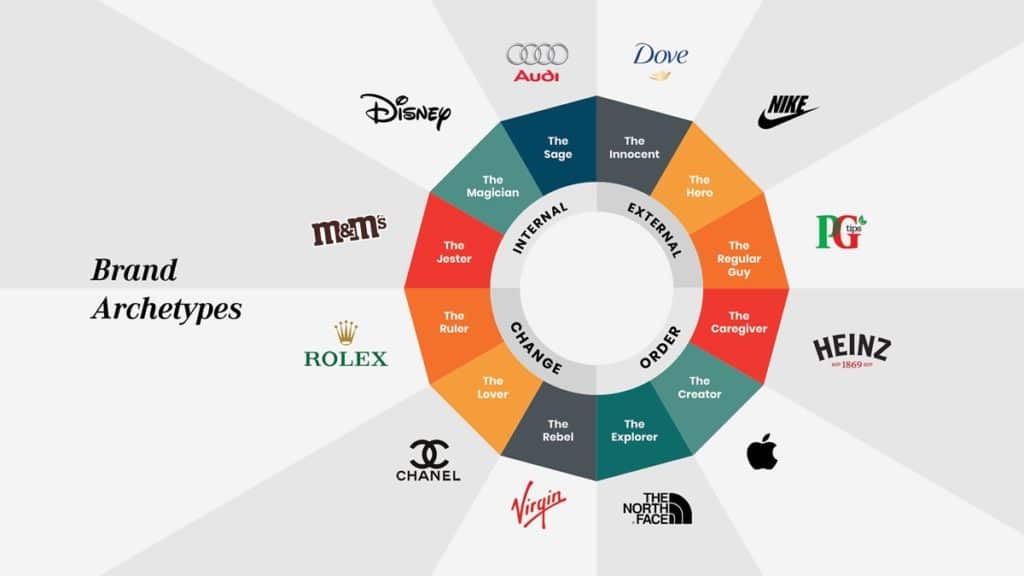In an era where corporate giants and startups alike compete for a slice of consumer attention, understanding the subtleties of business perception has never been more crucial. Two terms often at the heart of these discussions are ‘Brand’ and ‘Corporate Image.’ While they might be casually interchanged in conversation, their meanings vary significantly.
Distinguishing between them is essential for any business wanting to strategically communicate its value and essence. This guide delineates the contours of both concepts, highlighting their unique characteristics and importance and explaining what is the difference between brand and corporate image.
Brand: The Promise and Perception
At its core, a brand is a promise. It signifies what consumers can expect from a product or service, distinguished by its unique elements.

Key Components of Brand
- Identity: This isn’t just about a logo or a catchy tagline. Brand identity embodies the very essence of what a company wants to convey. Think of Apple’s sleek, minimalist design which speaks volumes about its commitment to simplicity and user-friendliness.
- Positioning: Every market is saturated. Positioning decides the niche your brand wants to occupy. Whether it’s Tesla promoting sustainable luxury or Dollar Shave Club emphasizing affordable quality, positioning differentiates a brand from its peers.
- Voice: Brands speak, and they do so in diverse ways. While Netflix might communicate with humor and modern flair, Rolex’s voice would be one of timeless elegance. This voice is consistent, whether it’s an advertisement, a tweet, or a customer support interaction.
- Promise: Beyond just marketing, a brand’s promise is its commitment. When Amazon promises quick deliveries, it’s setting an expectation. When a brand consistently meets or exceeds these expectations, trust is built.
- Experience: Beyond aesthetics or promises, it’s the tangible interactions that matter most. How user-friendly is a website? How effective is a product? How swift is the customer support? All these culminate in the overall brand experience.
Corporate Image: The Overall Impression
Beyond individual products or services lies a vast ecosystem — the company. Corporate image is the mirror reflecting the entirety of this ecosystem in the public’s eyes.
Key Components of Corporate Image
- Reputation: Built over time and challenging to change, reputation is the summation of a company’s past actions. Companies like Microsoft have evolved their reputations over decades, shifting from just software giants to innovators in hardware and cloud services.
- Culture and Values: Companies aren’t faceless entities; they’re comprised of people. The beliefs and values practiced internally inevitably seep out. Google’s “Don’t be evil” motto exemplifies how a company’s culture can influence public perception.
- Communications: Consistent and transparent communication forms the backbone of a robust corporate image. In times of crisis or triumph, how a company communicates can significantly sway public perception.
- Visual Identity: This extends beyond logos. From the design of corporate headquarters to the layout of annual reports, the visual identity offers a cohesive look into the company’s ethos.
- Social Responsibility: In a world increasingly conscious of social issues, a company’s stance on sustainability, community development, and philanthropy plays a pivotal role in shaping its image. Companies like Patagonia, with their commitment to environmental causes, leverage social responsibility as a core part of their corporate image.

The Interplay
The relationship between brand and corporate image is complex, multifaceted, and undeniably interwoven. These elements don’t just co-exist; they influence and shape one another in significant ways. Let’s delve deeper into their symbiotic relationship:
- Reflective Influence: A strong brand can enhance a company’s overall image. For instance, when a product under a conglomerate’s banner garners worldwide acclaim, it doesn’t only uplift the brand but also casts a favorable light on the entire corporation. Conversely, a tarnished brand can negatively impact the corporate image, making damage control a cross-sectional effort.
- Unified Vision: For a corporation that houses multiple brands, each brand might cater to a different audience or promise. However, a cohesive corporate vision ensures that even with their unique attributes, all brands under the umbrella echo the core values of the parent company.
- Resource Allocation and Support: A corporation’s image can influence where resources are allocated among its various brands. If a specific brand is particularly influential in enhancing the corporation’s image, it might receive more funding and support.
- Reputation Management: In today’s digital age, news—be it positive or negative—spreads swiftly. A misstep by a single brand can lead to a PR crisis for the entire corporation. The reverse is also true; if a company’s overall image takes a hit due to external factors, individual brands may feel the repercussions.
- Shared Values and Culture: While brands can have their distinct personalities, they often draw from the overarching culture and values of the corporation. For instance, if a company prides itself on sustainability, its brands will likely reflect eco-friendly initiatives in their operations and marketing.
- Strategic Shifts: Sometimes, corporations undergo strategic shifts, either due to market demands, leadership changes, or other factors. During these times, brands under the corporation might undergo rebranding or repositioning to align with the new corporate direction.
- Stakeholder Trust: Stakeholders don’t just invest in products or services; they invest in the entirety of the company. Strong, reliable brands within a corporation can enhance stakeholder trust in the company’s overall stability and future potential.
In essence, the dynamic between brand and corporate image is akin to the relationship between individual chapters and the overarching narrative in a book. While each chapter (brand) has its story to tell, the narrative (corporate image) sets the tone, direction, and overarching message. As businesses continue to evolve and expand, understanding this delicate interplay becomes vital for consistent growth and maintaining stakeholder trust.
Conclusion
The intricate dance between brand and corporate image is one that businesses must master. While brands cater to specific promises tied to products or services, the corporate image offers a panoramic view of a company’s stance, values, and overall perception. As businesses evolve in a world where consumer loyalty and trust are gold, understanding and nurturing both these aspects can be the roadmap to sustained success.
